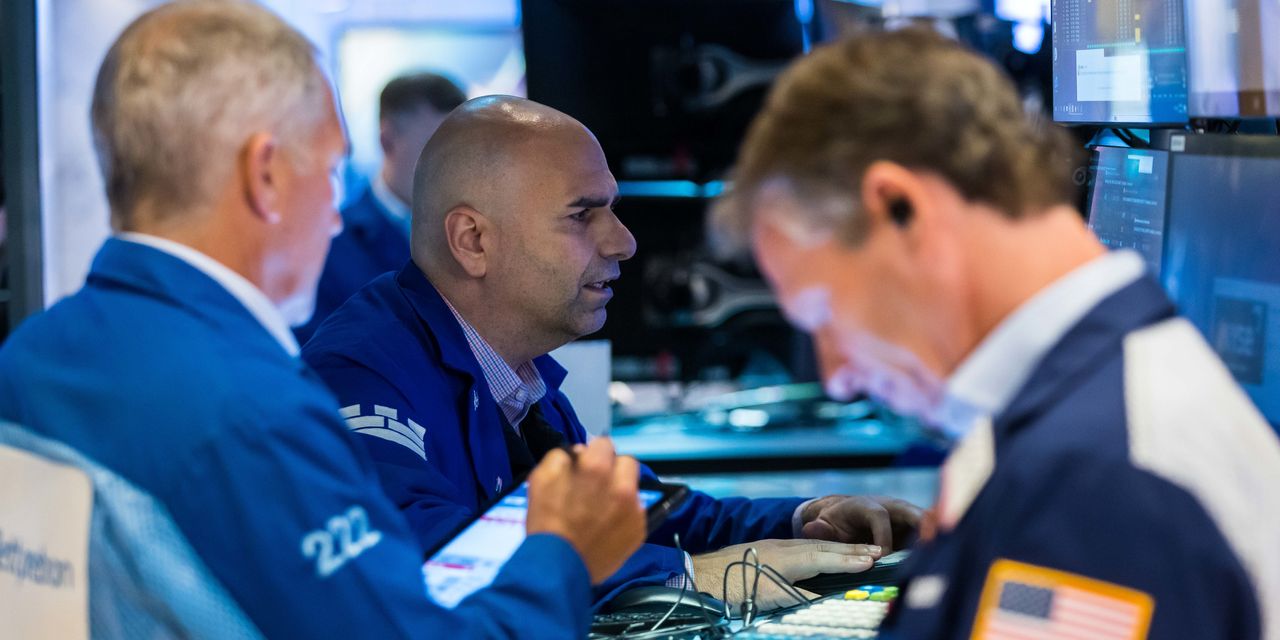No matter how you slice it, stocks just aren’t that attractive relative to bonds these days.
That is especially true after the
S&P 500’s
recent rally has pushed the index’s valuation multiple higher, while bond yields have held their ground.
The S&P 500 is up 17% from a year ago, including a 15% year-to-date gain. That rise has come as consensus earnings estimates have been flat to down, making the index more expensive. The S&P 500’s forward price-to-earnings multiple stands at 19 times today, up from 16 times a year ago and 17 times at the start of 2023.
Meanwhile, despite some volatility around shifting expectations for Federal Reserve policy, bond yields have remained relatively steady. The iBoxx USD Liquid Investment Grade index is essentially flat so far this year. It tracks a broad swath of the U.S. investment grade corporate bond universe.
Flipping the S&P 500’s P/E multiple produces the index’s earnings yield: 5.2% today. Compare that to the 5.5% yield offered by U.S. investment grade corporate bonds: It makes credit more attractive than equities, writes Torsten Slok, chief economist at Apollo Global Management. The yield is higher and debt is senior in the capital structure—bonds are still plenty competitive with stocks these days.
With stocks more expensive, they are compensating investors less for their level of risk than they have in the past. That is seen in the equity risk premium, or ERP—another measure of stock valuations that looks at stocks and bonds comparatively.
ERP is generally calculated as the S&P 500’s earnings yield minus the yield on the 10-year U.S. Treasury note—essentially the premium return that investing in stocks should provide versus a risk-free rate, like the yield on U.S. Treasuries. The higher the ERP, the more investors are being compensated for the greater risk that stocks carry over bonds.
Today, the S&P 500’s ERP is around 135 basis points, or hundredths of a percentage point—down from around 300 basis points a year ago and the lowest ERP since before the financial crisis. It’s slightly below the average over the past 40 years.
The slimmer the ERP, the less room for error there is should earnings disappoint or bond yields climb. Mike Wilson, Morgan Stanley’s chief U.S. equity strategist, expects S&P 500 earnings to decline in the coming quarters as the economy slows and profit margins compress, before rebounding in 2024. That’s at odds with the consensus forecast for year-over-year growth in the third and fourth quarters of this year, following a 5.4% decline in the second quarter.
“We expect an abrupt reset [higher] on the equity risk premium once the market starts to worry about the risk to earnings,” Wilson writes, meaning that stock valuation multiples will fall. “We think that moment of recognition will come either gradually as companies disappoint and guide lower over the next few quarters or it will come abruptly due to some exogenous event that challenges the consensus thinking on growth.”
Down the market capitalization spectrum, valuations look better relative to bonds, but the trend is still in the wrong direction. The S&P 600 index of small-cap stocks trades for 13.7 times expected earnings over the coming year. That’s good for an earnings yield of 7.3%, or a premium of 360 basis points over the 10-year Treasury’s yield. It compares with the S&P 600’s ERP of 590 basis points a year ago, when bond yields were lower and the small-cap index was cheaper.
Write to Nicholas Jasinski at [email protected]
Read the full article here













